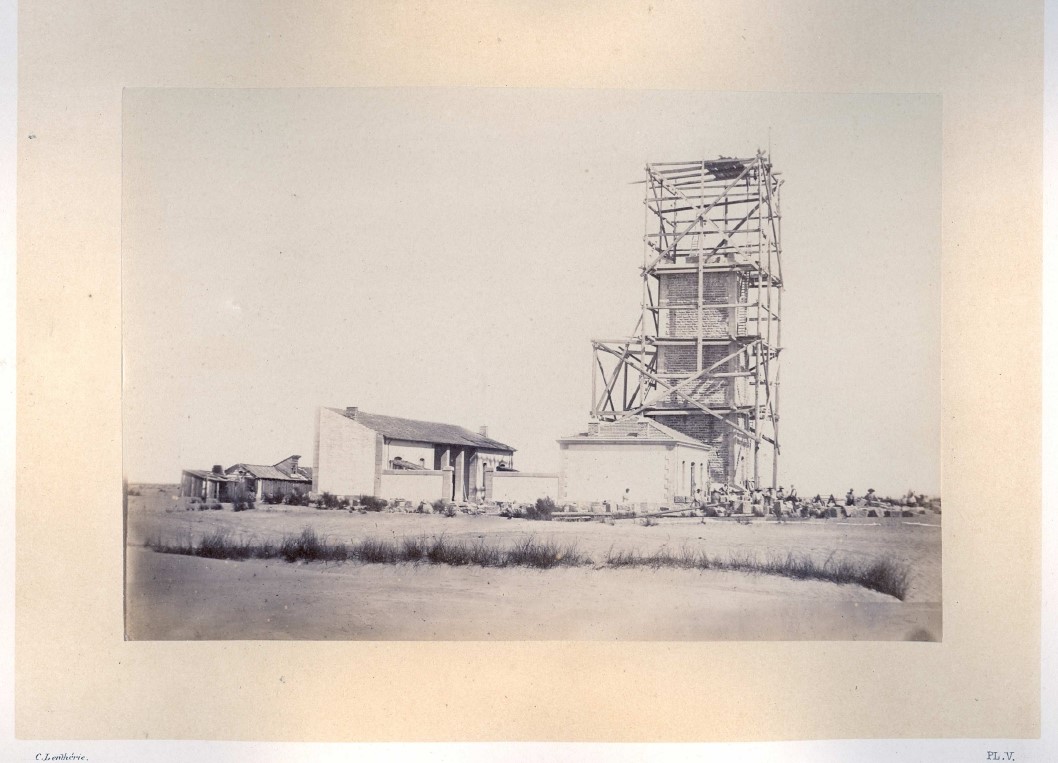The history of the lighthouse
Lost in the middle of the sand dunes and recognisable thanks to its original square shape and its black colour visible from the sea, the Espiguette lighthouse has been lighting up our coastline and guiding sailors for over 150 years. Let's discover together the history of a unique place with an exceptional natural heritage.
The construction of a high point in the middle of the dunes
On 17 April 1860, the lighthouse commission ordered the construction of a lighthouse at the tip of Espiguette to replace the old lighthouse at the entrance to Grau du Roi, which had been rendered ineffective by the silting up of the gulf. The contractor Charles Dupuy was awarded the contract to build the lighthouse, and the engineer Charles Lenthéric drew up the plans in 1861, which were approved in 1865.
The construction of the Espiguette lighthouse marked the beginning of the development of the Gard coastline.
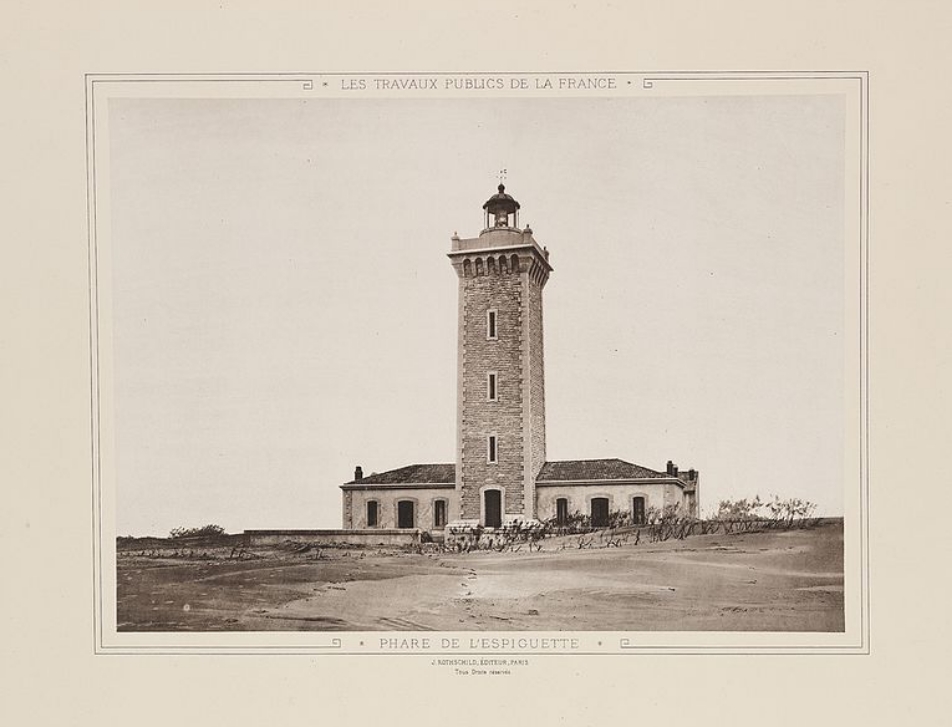
Difficult site conditions
The project suffered considerable delays due to strong winds, storms and sand accumulation, which led to changes in the design during construction. The tower’s scaffolding was moved, part of the roofing was blown away, and the 8-kilometre rail transport of materials along the beach had to be replaced by horse-drawn barges. In August 1866, illnesses caused by excessive heat and, above all, by the lack of fresh water at the Pointe de l’Espiguette disrupted the work and made it difficult to continue.
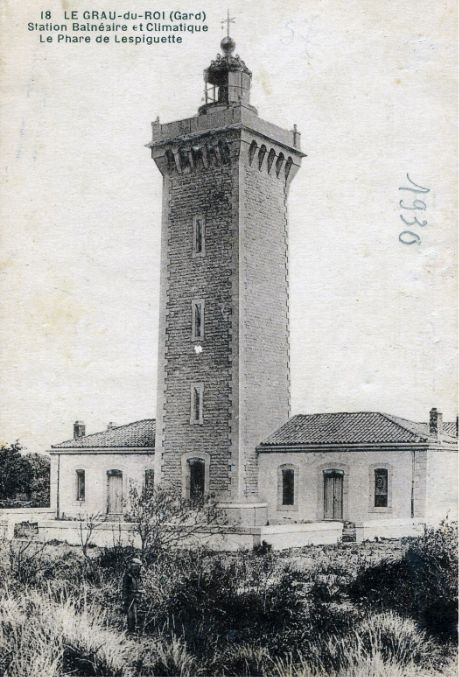
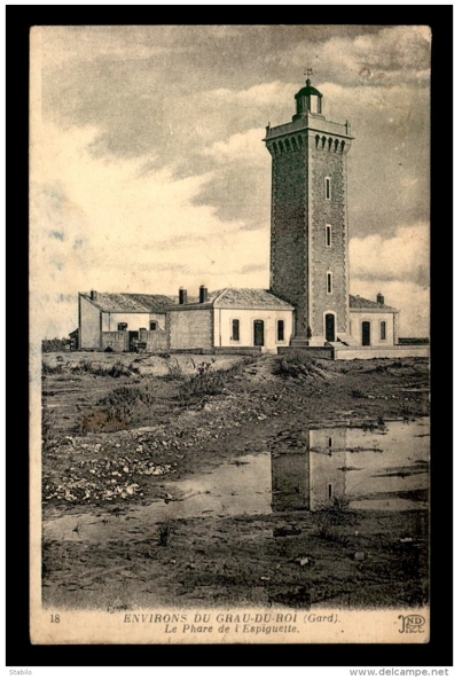
The guide's anecdote
The civil engineer Charles Lenthéric, who was responsible for supervising the work, fell in love with Elaïs, the daughter of the contractor Charles Dupuy. The young woman’s family opposed the relationship because of her Protestant faith, so the engineer did everything he could to slow down the work in order to stay as long as possible with his beloved. Another cause for delay, but this time a romantic one…
The construction work proved so difficult and arduous that Charles Dupuy and his workers nicknamed the Espiguette headland the cursed headland.
In October 1868, the building was ready to receive the lighting equipment arriving from Paris. The lighthouse was finally lit on 1 January 1869.
A lighthouse that has dominated the Espiguette headland for 150 years
Recognisable by its square shape and black colour visible from the sea, the Espiguette lighthouse has been lighting up our coastline and guiding sailors for over 150 years, with a range of 24 miles (45 km) and a rotating light with three white flashes every 15 seconds.
Assigned to the Conservatoire du littoral (Coastal Conservation Agency), the lighthouse was automated in 1980 thanks to its Fresnel lens, which will celebrate its 200th anniversary in 2023, and is no longer inhabited by keepers. It has been listed as a historic monument since 9 October 2012.
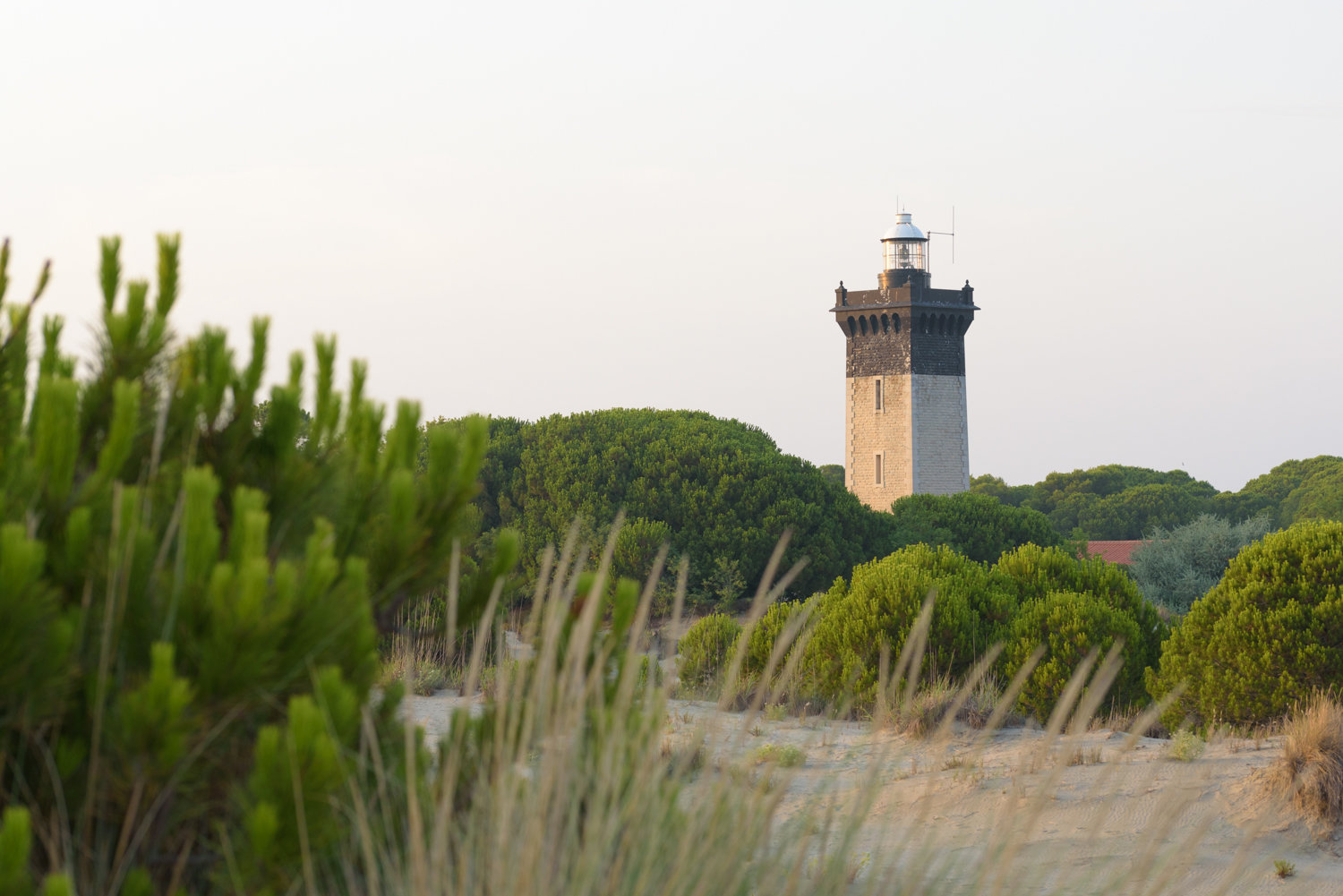
A landmark and monument lost in the vastness of the sand dunes
Over time, due to waves and coastal silting, the lighthouse, which was originally located 155 metres from the sea, is now 700 metres from the shore. A marble plaque indicating the distance of the tower from the low-tide mark is affixed to one of the lighthouse’s facades. This landmark, which has become invaluable, allows future generations to accurately determine the rate of beach encroachment.
A precious part of Le Grau-du-Roi’s maritime heritage, the Espiguette Lighthouse is located in the heart of a natural area that benefits from numerous environmental protections, classified as a Natura 2000 site, Petite Camargue Gardoise, Petite Camargue Laguno-Marine and Bancs Sableux de l’Espiguette.
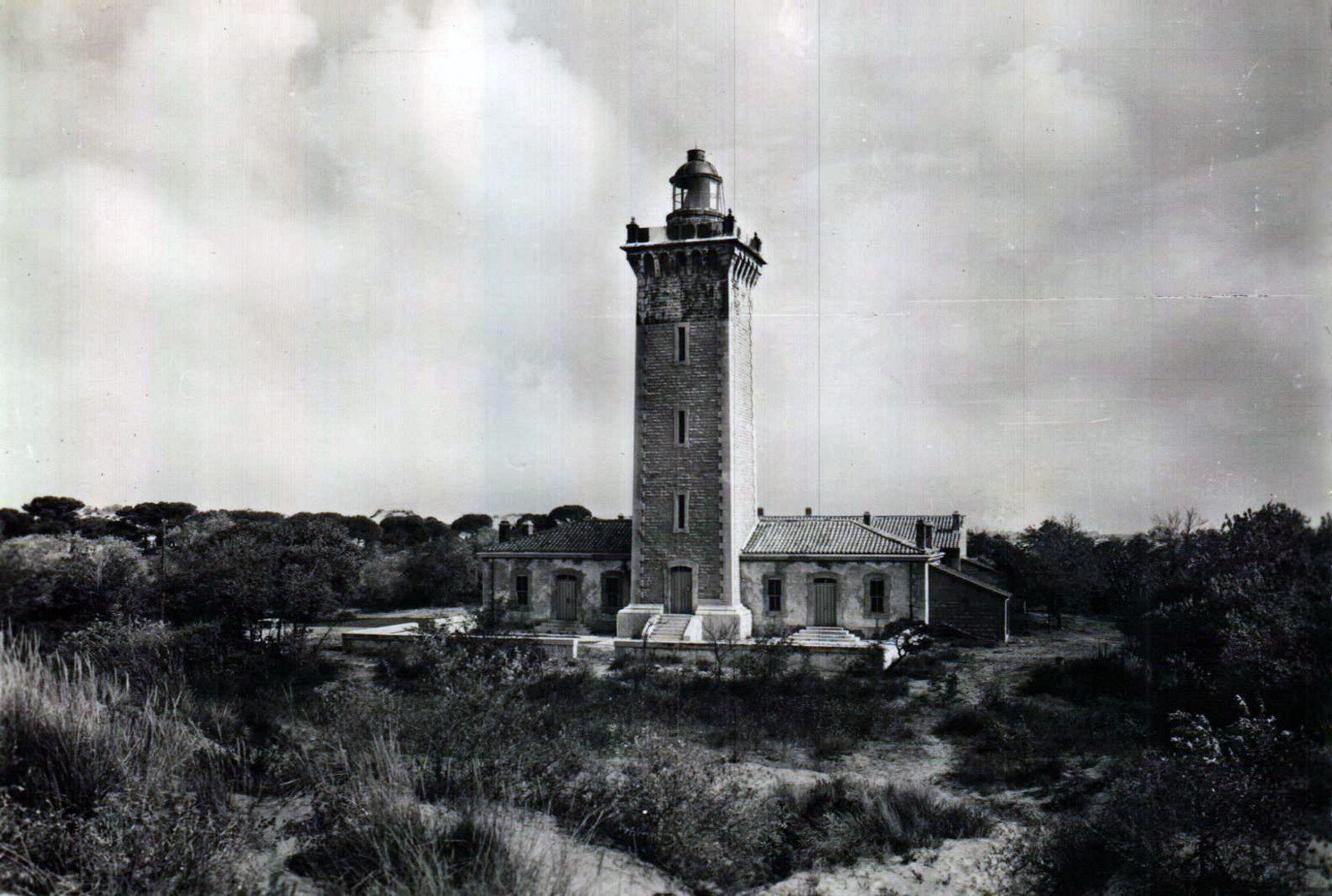
And what about architecture in all this??
The lighthouse was built based on the model of the Grave lighthouse in Gironde, built in 1859, from which it borrows the main features in terms of layout and architecture. It is organised as follows:
A first courtyard, partly paved and surrounded by low walls, facing the sea, provides access to the dwellings and the lighthouse.
The lighthouse itself, consisting of a 27-metre-high square central tower, is flanked on either side by two wings designed to house the keepers and their families, who succeeded one another until the lantern was automated in 1980 and the post was abolished in 2000. On the upper part of the tower, painted black, a neo-medieval corbel supports stone balustrades with an entablature composed of twenty corbels forming small arches.
A second paved inner courtyard, enclosed by high walls, is accessible from the lighthouse and the living quarters. In the centre of this courtyard is the well, and a building used as annexes (originally a courtyard with toilets and engineers’ accommodation on either side) occupies the eastern end of the courtyard.
